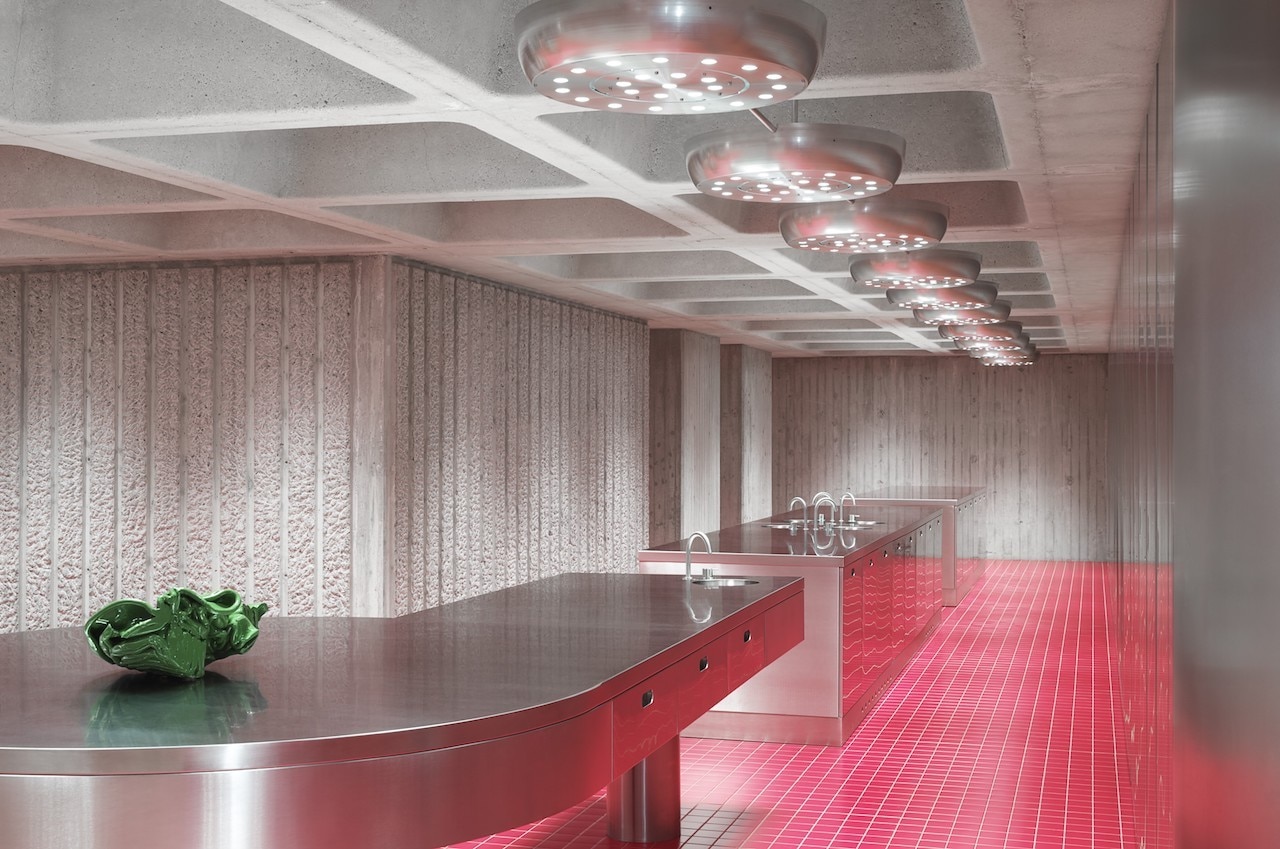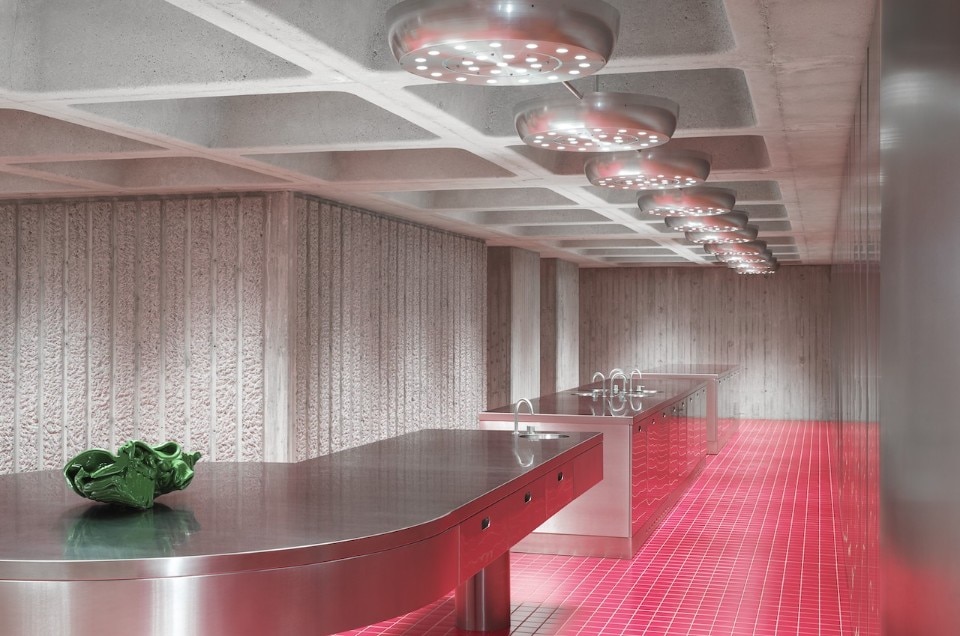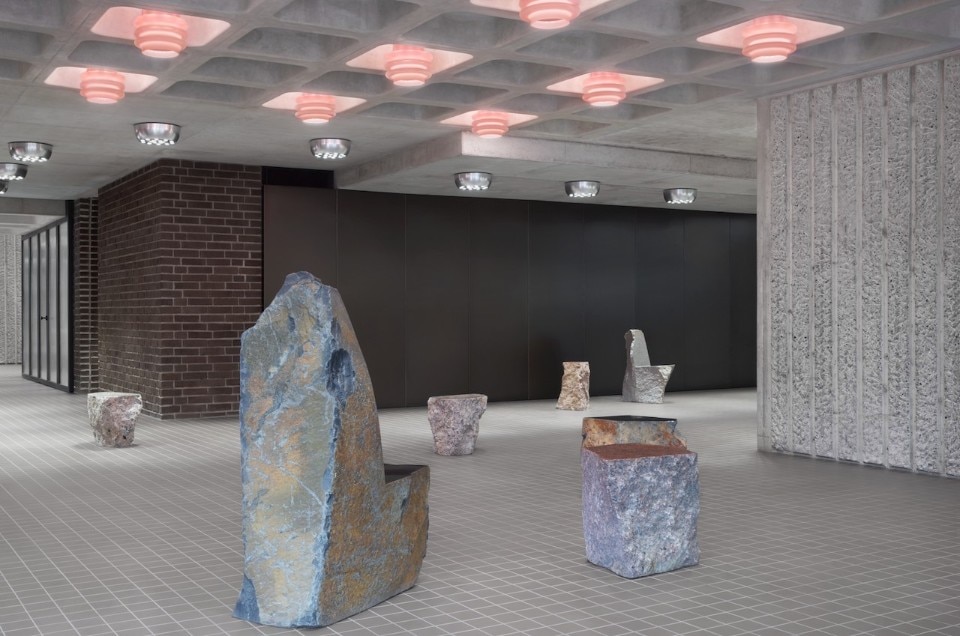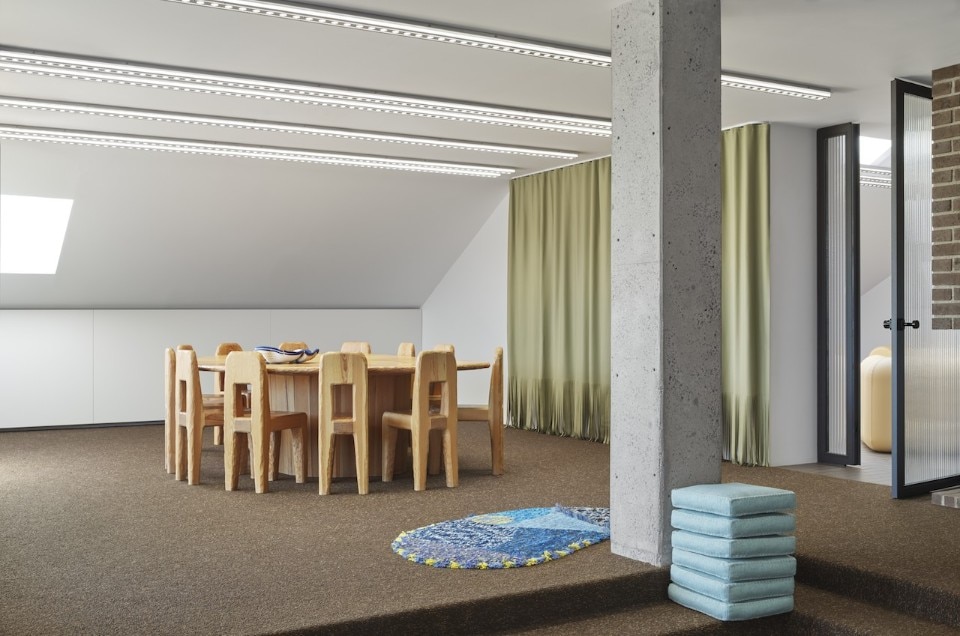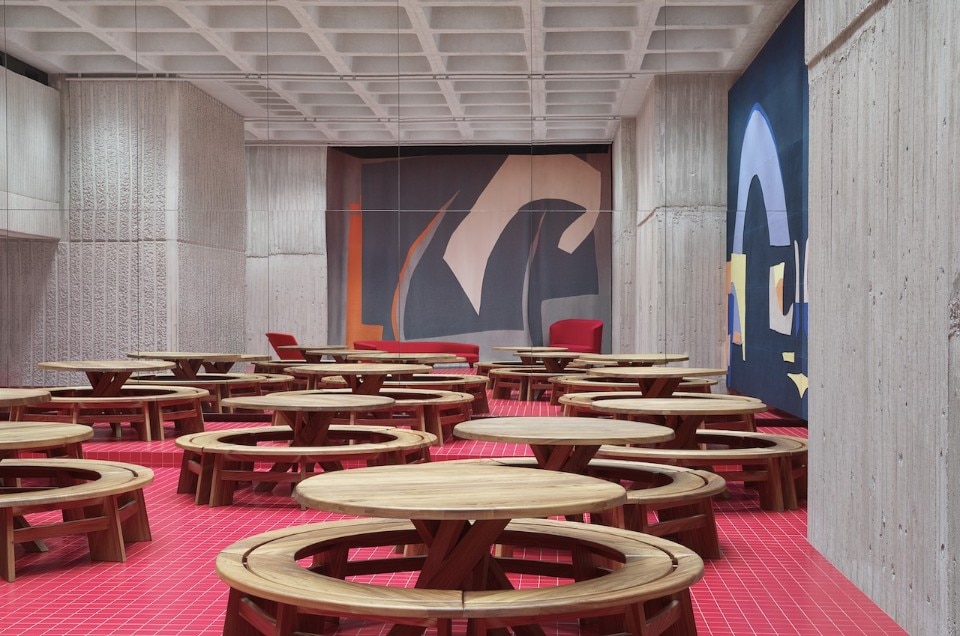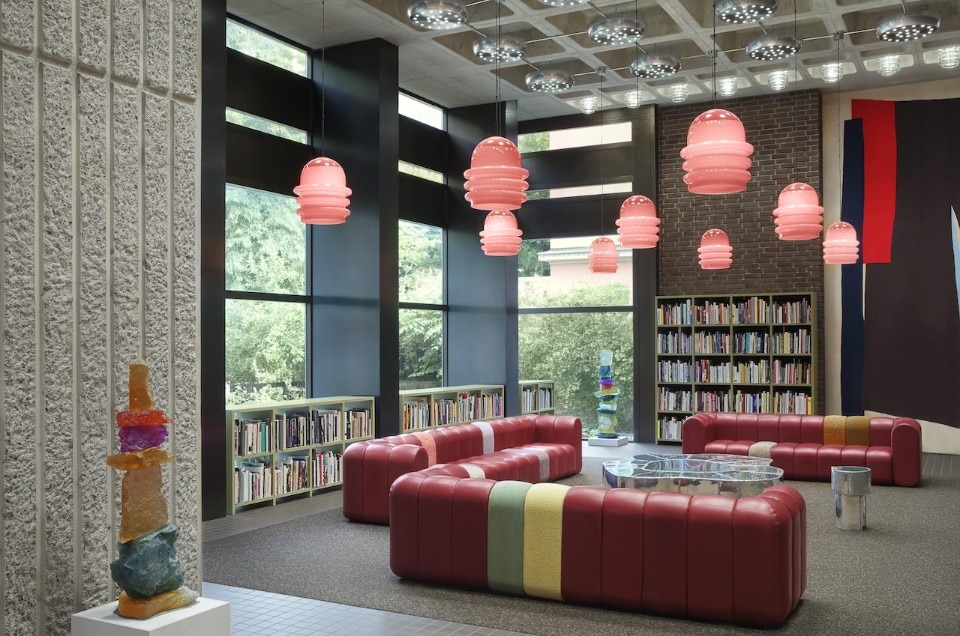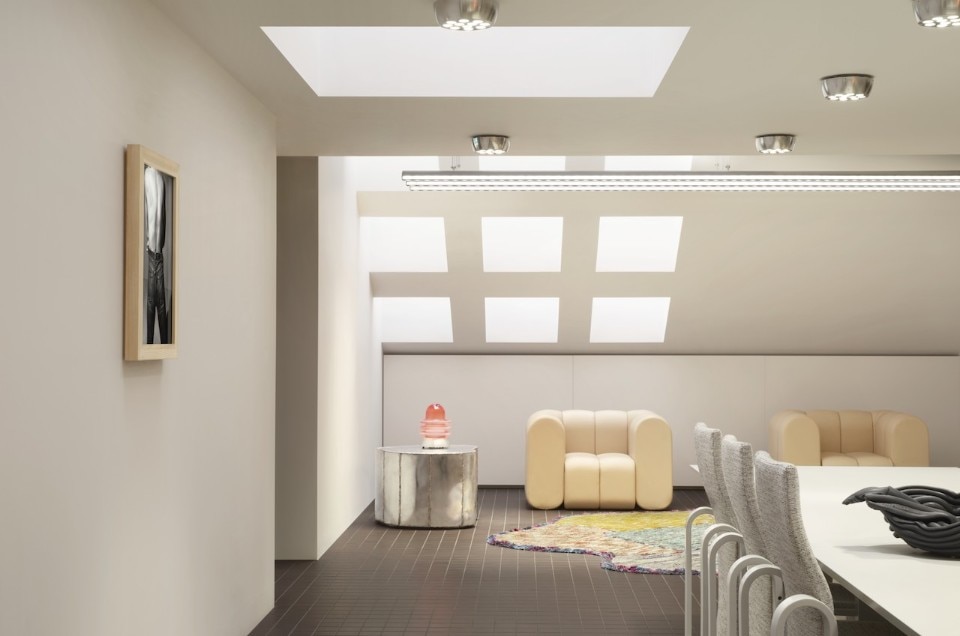This article was originally published on Domus 1041, December 2019
A wave of creativity has flooded the austere spaces of the ex-Czechoslovakian embassy in Stockholm. In the Östermalm area, a quiet zone of diplomatic offices, the Royal Conservatory and the Humlegården park, the cold war building at number 13 Floragatan has become the new headquarters of Acne Studios, the famous Swedish fashion brand. The building was designed by the Czech Jan Bočan of Atelier Beta in the tumultuous period between the Prague Spring, the Soviet invasion, and the “normalisation” of the Socialist Republic. Opened in 1972, it was – until the fall of the Wall – a kind of neo-Brutalist Kafkaesque castle in the midst of the elegant facades of a district that had been gentrified at the end of the 19th century.
A disturbing element for some, almost like the Soviet Embassy in Havana, a stone fist banged onto the Caribbean Malecón. Some speak of neo-Brutalism, others of “Eastern European Modernism”, in the wake of the re-assessment of the functionalism tendencies that were already popular at the time and not out of place in Sweden.
Some speak of neo-Brutalism, others of “Eastern European Modernism”, in the wake of the re-assessment of the functionalism tendencies that were already popular at the time and not out of place in Sweden
Almost completely devoid of windows (on the north and south faces), Floragatan 13 enclosed the small diplomatic community as though it were another world, complete with a cinema for screenings that was occasionally open to the Scandinavian public.
The basement projection room is now the Acne Studios canteen, with the kitchen managed by Café Nizza and large round tables with circular seating designed by Pierre Chapo to favour socialisation during breaks between the twohundred-odd workers from all around the world. Sold in 1998 following the separation between the Czech Republic and Slovakia, Floragatan 13 was renovated to office space under the guidance of the Swedish Magnus Tengblad, who, like Jan Bočan, teaches at the University of Prague. Following this stage, Acne Studios carried out restoration works on the original elements, exalting the bare concrete and eliminating later decorations that had been added to mask the building’s true origins.
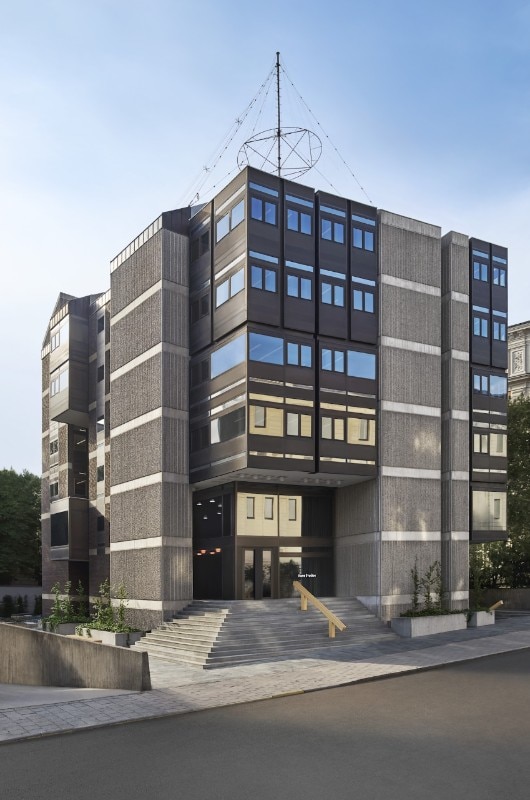
The interpretation of the common areas draws inspiration from the idea of Fashion Schools, providing spaces where group experimentation takes place through fun activities and creativity is allowed to flow freely, without architectural barriers. The canteen, the birch garden and the library on the ground floor are all areas intended for socialising. And of course, there is bike parking space.
As is tradition for Acne Studios, local materials have been used for the furnishings. The blocks of granite for the monumental seating in the entrance are from Småland and evoke a Viking cemetery, a feature wished for by Jonny Johansson, creative director of the brand, and created by Max Lamb, a designer from Cornwall who combines “prehistoric” and digital techniques. Back-lit screens with photographs of past collections serve to remind the designers of the company’s history.
The French Benoit Lalloz put a lot of effort into the lighting. The furnishings in the bathroom are in aluminium and there are showers for those coming in from a run in the park, in line with a well-being philosophy that encourages harmony between body and mind, and balance between private life and work. The Swedish tradition of a break for tea and cake, prepared in the headquarters’ kitchen, helps to face up to the coldest of afternoons.
The ex ambassador’s apartment, which dominates the top floor of Floragatan 13, offers a comfortable meeting room where, for the first time in many years, one of the building’s three fireplaces will be lit. No hammer-and-sickle-style symbols, even in an ironic key a là Goodbye Lenin, for this post-modern brand used to following in the wake of history, with its reinterpretation of iconic items such as jeans or the Biker jacket.


